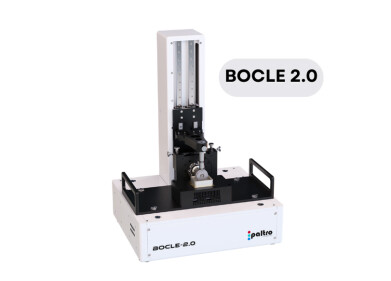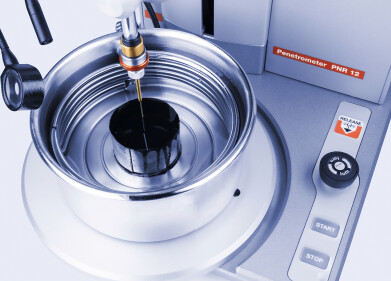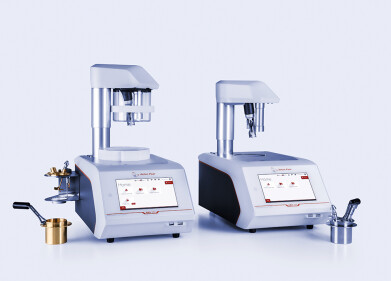-
 Oldham's OLCT 80 Wireless
Oldham's OLCT 80 Wireless -

-
 Oldham's OLCT 200 (SIL-2 Hardware)
Oldham's OLCT 200 (SIL-2 Hardware)
Measurement and testing
Reliability, Expertise and Low Maintenance - A Recipe for Gas Detection Success
Oct 17 2012
The price of oil is pushing toward all-time highs, and domestic land-based exploration and production are at near-record levels, particularly in the various shale formations throughout the United States. One of the dominant hazards associated with drilling in the shale formations is the prevalence of high concentrations of hydrogen sulfide (H2S), which occurs naturally in crude oil and gas.
H2S is extremely toxic in high concentrations, an Immediately Dangerous to Life and Health (IDLH) threshold of 100 ppm. Several of the shale formations contain high concentrations of H2S, posing a threat to human life in and around the drilling sites. To mitigate this threat, E&P companies routinely deploy area gas monitoring systems on their sites. Since drilling typically takes place in very remote and uninhabited forested areas, one of the most common challenges in utilizing permanently mounted monitoring systems was lack of power at the site where the system would be mounted. Products recently have been developed that specifically address some of the unique applications in detecting H2S and combustible gases in remote drilling locations with limited power availability.
Three Ingredients for Effective H2S Monitoring
- Versatile products with wireless transmission: E&P companies demand systems that can be quickly deployed, can monitor up to 16 remote areas around a drilling site, and report back to a central controller. Wireless solutions are growing for the oil and gas industry for good reasons. A common complaint heard throughout the oil and gas industry is the issue of frequency interference at multiple drilling rig sites that have all employed different gas detection systems. A transmitter with a toxic sensor solves that issue and, when fitted with a lithium ion battery and H2S sensor, can monitor for H2S and report near-real-time readings back to a central controller. Each transmitter has its own unique programmable address matching that of the controller to ensure proper communication with the right transmitter. Ultimate flexibility allows sites to employ multiple systems within close proximity without cross interference.
- Agility and expertise: Like those in most industries, oil and gas customers are continually being asked to do more work with fewer people. Oil companies now expect suppliers to be very consultative in their relationship. Most E&P companies are looking for more than just a supplier of equipment; they are looking for a partner that can design, commission, and maintain the gas detection system. It's a serious business where a lack of agility can to lead to high cost and a lack of expertise can lead to a deadly result. It's not just about how good the equipment is - it's about the knowledge and core values of your gas detection partner. Oldham’s Integrated and Engineered Solutions Team is one such partner.
- Redundancy, SIL 2, and PFD: The demand for systems that provide redundancy and have at least a safety integrity level of 2 ("SIL 2") is a trend that continues to gain steam. This is having a large influence on how gas detection manufacturers design products. The net effect has been an increase in the overall quality of a system that is more reliable, robust, and requires much less maintenance. The industry also has become very adept in understanding PFD (Probability of Failure on Demand) calculations.
Customers are beginning to ask for PFD calculations and have a keen interest in the maintenance requirements necessary in order to maintain a SIL-rated system. Customers are starting to learn that not all SIL-rated systems are alike; one must read the fine print. One manufacturer may be SIL 2 compliant but may require maintenance on that device four times per year, where another manufacturer requires maintenance only one time per year. Multiply the number of points at a given site, and the total cost of ownership begins to add up.
By Keith Rhodes
Keith Rhodes, director of Sales and Service for Oldham Americas, has P&L responsibility for Oldham Americas, a subsidiary of Industrial Scientific based in Arras, France. Oldham specializes in area monitoring solutions for flame, hazardous gases, and related dangers in the workplace. Rhodes previously served at Industrial Scientific Corporation as global account manager in the Petrochemical, Pulp and Paper and Utilities industries.
Digital Edition
PIN 25.6 Buyers' Guide
January 2025
Buyers' Guide Directory - Product Listings by Category - Suppliers Listings (A-Z) Articles Analytical Instrumentation - ASTM D7042: The Quantum Leap in Viscosity Testing Technology -...
View all digital editions
Events
Jan 25 2025 San Diego, CA, USA
SPE Hydraulic Fracturing Technology Conference and Exhibition
Feb 04 2025 The Woodlands, TX, USA
Feb 05 2025 Guangzhou, China
Trinidad and Tobago Energy Conference 2025
Feb 10 2025 Point Lisas, Trinidad
Feb 10 2025 Lagos, Nigeria


















